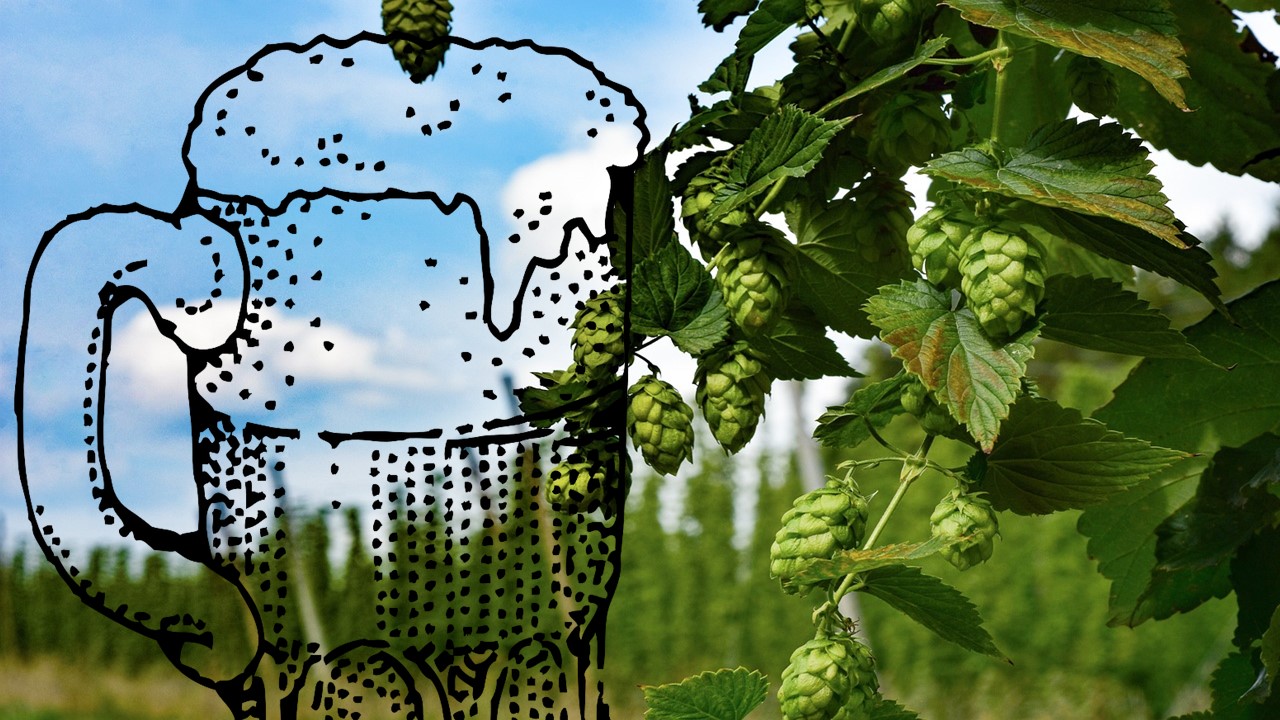Evaluation of variability in alpha and beta acid content in European hop varieties (Humulus lupulus L.)
DOI:
https://doi.org/10.18832/kp2024.70.919Keywords:
hop, Humulus lupulus L., alpha and beta acids, ratio alpha/beta, variabilityAbstract
Between 2009 and 2023, European hop varieties were evaluated within genetic resources in the Czech Republic. The objective of this paper was to determine the variability of hop alpha and beta acid contents in the monitored varieties at a single site over the period of fifteen years. At the same time, the trend in which the observed substances decrease or increase was assessed. The lowest average alpha acid content was detected in Strisselspalter (2.96% w/w), while the highest content was found in Herkules (14.03% w/w). The lowest variability in alpha acid content was measured in Vital (14.59%) and Herkules (16.48%). Unlike the aforementioned varieties, Golding exhibits the highest variability (46.28%). All varieties showed a decreasing trend in alpha acid content over the fifteen years of cultivation. Lubelski had the highest decrease in alpha acid content and also showed a high correlation (r² = 0.664). The varieties with the lowest average beta acid content were Celeia (2.77% w/w) and Golding (2.97% w/w). The variety with the highest average beta acid content was Vital (7.30% w/w). All varieties displaied a decreasing trend in beta acid content. Perle had the lowest trend of decrease in beta acid content, while Tradition had the highest trend of decrease. The varieties Strisselspalter, Saaz, Tettnang, Sládek, and Bobek had an alpha/beta acid ratio below 1. However, the variety Bobek showed the highest variability at 32.18%. Herkules had the highest alpha/beta acid ratio (3.20). The most stable alpha/beta acid ratio was found in Marynka (8.41%).
References
EBC 7.7 (1998). Alpha- and Beta-Acids in Hops and Hop Products by HPLC. In: EBC Analysis Committee-Nürnberg (ed.). Analytiva EBC, Hans Carl Get-ränke Fachverlag, Chap. 7.7.
Forster, A., Gahr, A., Schull, F., Lehmair, E. (2022). Distinguishing hop varieties as either aroma or bitter hops – is this still relevant? In: F. Weihrauch (ed.) Proceedings of the Scientific-Technical Commission 03–07 July 2022, Lugo, Spain. Wolnzach: Scientific-Technical Commission of the International Hop Growers' Convention, 2022, p. 88–91. ISSN 1814-2206
Forster, A., Gahr, A., Schull, F. (2024). Hopfenvrsorgung unter dem Druck des Klimawandels. Hopfen Rundschau, International Edition of the Germany Hop Growers Magazine 2023/2024, 34–42.
Charvátová, J., Štefanová, L., Nesvadba, V. (2017). Collection of hop genetic resources in the Czech Republic. In: F. Weihrauch (ed.) Proceedings of the Scientific-Technical Commission 25–29 June 2017, St. Stefan am Walde, Austria. Wolnzach: Scientific-Technical Commission of the International Hop Growers´ Convention, 2017, p. 98. ISSN 2512-3785.
IHGC (2024). Hop Variety List. Available from: https://www.ihgc.org/about/
Karabín, M., Brányik, T., Krulis, R., Dvořáková, M., Dostálek, P. (2009). Application of Chemically Modified Bitter Compounds in Brewing. Chemické listy, 103(9), 721–728.
Krofta, K., Patzak, J. (2011). Investigation of Czech hop varieties authenticity by means of chemical and genetic analyses. Kvasný průmysl, 57(7–8), 296–304. https://doi.org/10.18832/kp2011035
Krofta, K., Patzak, J, Nesvadba, V., Mikyška, A., Slabý, M., Čejka, P. (2013). Vital – The Czech Hop Hybrid Variety – Part I. Kvasný průmysl, 59(1), 2–13. https://doi.org/10.18832/kp2013001
Krofta K., Mikyška A. (2014). Hop beta acids: Properties, Significance and Utilization. Kvasný průmysl, 60(4), 96–105. https://doi.org/10.18832/kp2014010
Meloun, M., Militký, J. (1994). Statistical processing of experimental data. Plus, Praha, pp. 52.
Nesvadba, V., Krofta, K., Polončíková Z. (2011). New knowledge in czech hop breeding. International hop growers convention „Proceedings of the Scientific Commission, 19 – 23 June 2011, Lublin, Poland, 15–18. ISSN 1814-2192
Nesvadba, V., Charvátová, J., Trnková, S. (2020a). Breeding of flavour hops in the Czech Republic. Kvasný průmysl, 66(6), 366–371. https://doi.org/10.18832/kp2019.66.366
Nesvadba, V., Charvátová, J., Vostřel, J., Werschallová, M. (2020b). Evaluation of Czech hop cultivars since 2010 till 2019. Plant, Soil and Environment, 66(12), 658–663. https://doi.org/10.17221/430/2020-PSE
Nesvadba, V., Donner, P., Charvátová, J., Trnková, S. (2023). Breeding hops for drought resistance. In: F. Weihrauch (ed.) Proceedings of the Scientific-Technical Commission 25–29 June 2023, Ljubljana, Slovenia. Wolnzach: Scientific-Technical Commission of the International Hop Growers' Convention, 2023, pp. 11–15.
Nesvadba, V., Straková, L., Fritschová, G., Olšovská, J., Charvátová J., Trnková, S. (2023). Evaluation of variability of the content of alpha and beta acids in Czech bittering hop varieties (Humulus lupulus L.) Kvasný průmysl, 69(2), 719–725. https://doi.org/10.18832/kp2023.69.719
Opletal, L., Čopíková, J., Uher, M., Lapčík, O., Moravcová, J., Drašar, P. (2007). Naturally Occurring Bitter Compounds. Chemické listy, 101(11), 895–906.
Verzele, M., de Keukeleire, D. (1993). Chemistry and Analysis of Hop and Beer Bitter Acids, 1st Edition, Volume 27 - October 22, 2013. Elsevier, Amsterdam. ISBN: 9781483290867

Downloads
Published
How to Cite
Issue
Section
License
Copyright (c) 2024 Vladimír Nesvadba, Jitka Charvátová, Jana Olšovská, Sabina Trnková

This work is licensed under a Creative Commons Attribution 4.0 International License.







